-


 Welcome To
Welcome To
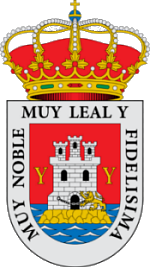 Yecla
Yecla

 Welcome To
Welcome To
 Yecla
Yecla

 Welcome To
Welcome To
 Yecla
Yecla

 Welcome To
Welcome To
 Yecla
Yecla

 Welcome To
Welcome To
 Yecla
Yecla


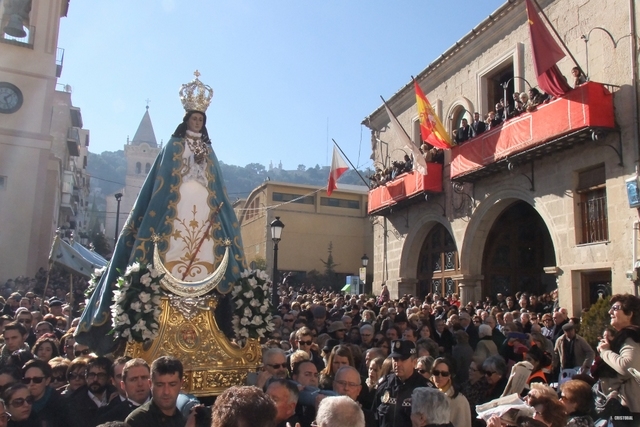 The patron saint’s fiestas in Yecla, which take place every year starting on 5th December, are the continuation of a tradition which began almost 400 years ago, with the rituals and ceremonies having evolved into their current form over the centuries.
The patron saint’s fiestas in Yecla, which take place every year starting on 5th December, are the continuation of a tradition which began almost 400 years ago, with the rituals and ceremonies having evolved into their current form over the centuries.
Many of the traditions around which the fiestas revolve date back to events which took place nearly four hundred years ago, including the costumes worn by more than 700 “tiraores” and their “cargaores” as they accompany the Virgen del Castillo in the streets while firing arquebuses, the “Mayordomo del Bastón” (based on Captain Zaplana), and other emblematic elements surrounded by the pungent burning of gunpowder, the flare of fire and the overwhelming crack of gunshot as the Virgen makes her way up and down from her sanctuary.
History of the Yecla fiestas
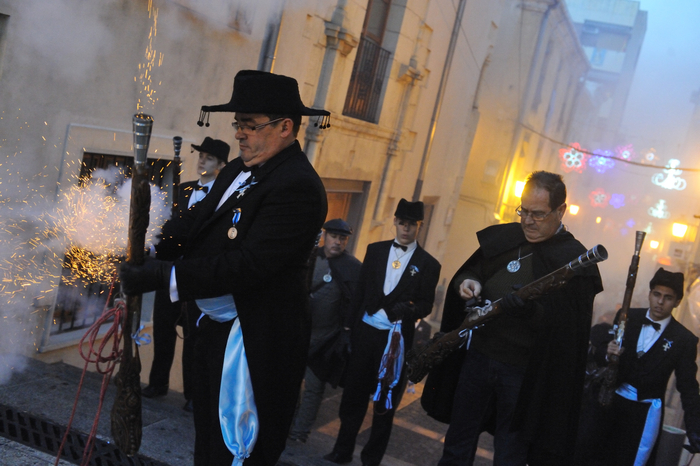 The origins of the fiestas lie in the formation of a company of military recruits under the orders of Captain Martín Soriano Zaplana, who marched them off to fight in the Catalan Revolt of 1642. Six months later they returned from a stay in the garrison of Vinaròs without having seen any action, and in recognition of their good fortune the men of Yecla marched up to the Santuario del Castillo to give thanks to the figure of Nuestra Señora de la Encarnación.
The origins of the fiestas lie in the formation of a company of military recruits under the orders of Captain Martín Soriano Zaplana, who marched them off to fight in the Catalan Revolt of 1642. Six months later they returned from a stay in the garrison of Vinaròs without having seen any action, and in recognition of their good fortune the men of Yecla marched up to the Santuario del Castillo to give thanks to the figure of Nuestra Señora de la Encarnación.
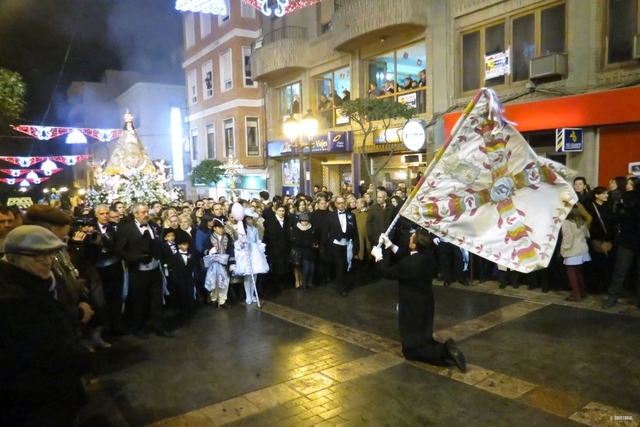 From that moment it became an annual tradition to parade the Virgin down to the town and the church of La Asunción while firing their arquebuses (a predecessor of the musket). The first official statute regarding the order of ceremonies during the Fiestas was drawn up in 1786, and was not revised until 200 years later.
From that moment it became an annual tradition to parade the Virgin down to the town and the church of La Asunción while firing their arquebuses (a predecessor of the musket). The first official statute regarding the order of ceremonies during the Fiestas was drawn up in 1786, and was not revised until 200 years later.
In the meantime, though, in 1868, the fiestas were altered when the Basílica de la Purísima was officially inaugurated, and it was decided that the Virgin should be housed there during the celebrations. The Asociación de Mayordomos de la Purísima Concepción, which now organizes the fiestas every year, was formed in 1932 by the parish priest José Esteban Díaz.
The popularity of the fiestas among the locals in Yecla rose significantly after Pope Pius XI canonized the Virgen del Castillo in 1954, and since then new elements such as the floral offering and other activities have been introduced.
However, the fiestas are best known for the thousands of kilos of gunpowder which is fired off by the muskets of the tiraores, filling the air with the acrid scent of gunpowder, smoke and an ear-splitting amount of noise!
Programme of Yecla fiestas patronales
5th December
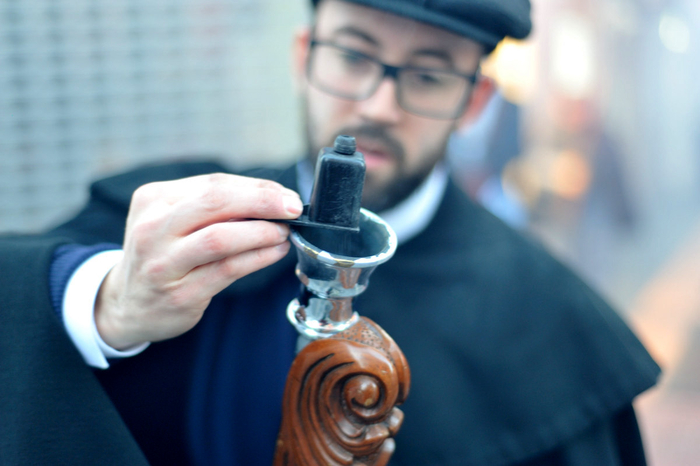 The fiestas begin on 5th December with the “Acto del Beneplácito” opening ceremony in the Town Hall, when the President of the Asociación de Mayordomos officially requests permission from the municipal authorities to declare the fiestas open. During the afternoon and evening the 18th century Alabardero soldiers and drummers noisily invite the residents of the town to join in the celebrations.
The fiestas begin on 5th December with the “Acto del Beneplácito” opening ceremony in the Town Hall, when the President of the Asociación de Mayordomos officially requests permission from the municipal authorities to declare the fiestas open. During the afternoon and evening the 18th century Alabardero soldiers and drummers noisily invite the residents of the town to join in the celebrations.
6th December
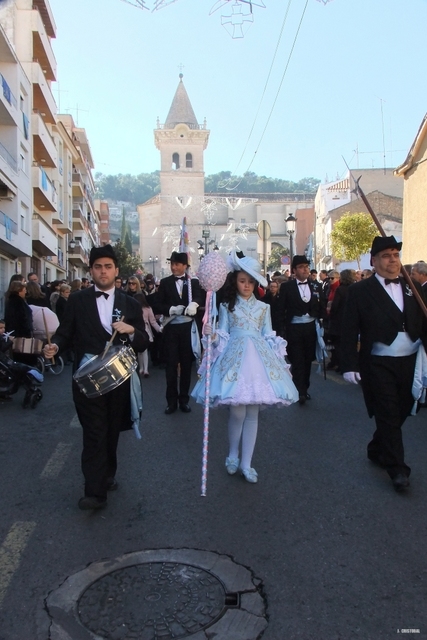 The day begins at 6.00 in the morning, when muskets are fired to announce the start of the celebrations. This is followed by the Misa de Pajes (Mass of the pages who lead the official processions) in the Basílica, and in the afternoon all of the soldiers are involved in the ceremony of kissing the flag (El Beso de la Bandera).
The day begins at 6.00 in the morning, when muskets are fired to announce the start of the celebrations. This is followed by the Misa de Pajes (Mass of the pages who lead the official processions) in the Basílica, and in the afternoon all of the soldiers are involved in the ceremony of kissing the flag (El Beso de la Bandera).
7th December
On 7th December the figure of the Patron of Yecla is brought down to the town and the events begin early with the “Alborada” in the courtyard of the Basílica. The soldiers make their way up to the Santuario del Castillo, firing their arquebuses all the way, before bringing the Saint down to her temporary home in the Basílica, again firing their muskets. On leaving the Santuario by the castle, the “Mayordomo” waves the Virgin’s flag in a ceremony known as the “Paso de la Bandera”, a spectacle which is repeated when the procession arrives at the Basílica.
Also on 7th December is the floral offering after a procession through the streets of the town centre.
8th December
The biggest day of the Yecla fiestas is 8th December, the feast day of “La Purísima”, which begins with a parade of all the soldiers and continues with the procession of the figure of the Patrona of Yecla through the streets of the town. During this procession the Mayordomo again performs the Paso de la Bandera on leaving and re-entering the Basílica, accompanied by hundreds of deafening arquebuses.
Sunday after 8th December
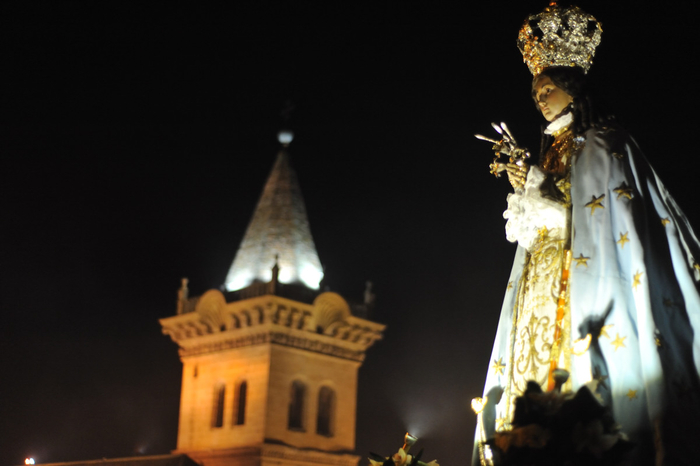 The event of the fiestas takes place on the Sunday after 8th December, when the Virgen del Castillo is returned to her Santuario. After a solemn Holy Mass the Mayordomo leads the way, accompanied by the soldiers and arquebuses.
The event of the fiestas takes place on the Sunday after 8th December, when the Virgen del Castillo is returned to her Santuario. After a solemn Holy Mass the Mayordomo leads the way, accompanied by the soldiers and arquebuses.
The Virgen is carried out of the Basilica and positioned in the doorway and saluted by each of the “tiraores” and their “cargaores” as they pass, loosing off shots from the centre of town right the way up to the sanctuary, before herself joining the procession as thousands of people slowly wind their way up the hillside. Its dark as the procession begins, the streets lit by sparks and flares from the guns, the ground wet to prevent accidental fires, and the proceedings have an almost surreal air of fire and smoke in the air as the procession climbs uphill. It's only 2 km long but the journey takes around 3 hours due to the sheer volume of those firing guns and the crowds accompanying the Patrona on her journey.
Once at the sanctuary the Virgin is paraded three times around the old pine tree before being taken inside, and her annual visit to the town officially ends with more flag-waving and gunshots.
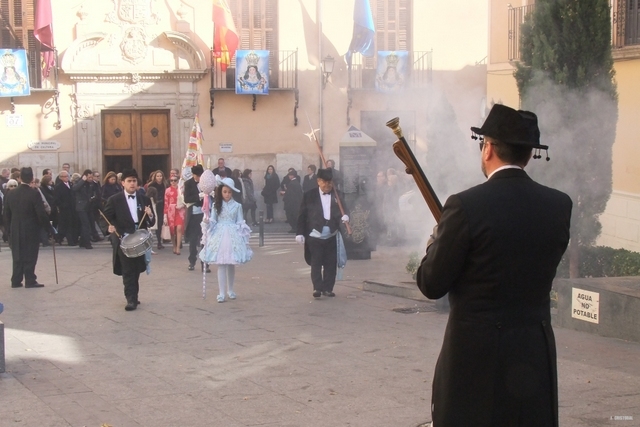 When the soldiers return to the town the "Entrega de Insignias" ceremony is held, in which the “Clavarios” become “Mayordomos”. One of these is the “Mayordomo del Bastón”, who represents Captain Martín Soriano Zaplana, and another is the “Mayordomo de la Bandera”, who carries on the tradition of the standard-bearer back in 1642. All of those forming part of this group are dressed in black trousers, hats and neckties and white shirts. This final ceremeony welcomes the new recruits who will be allowed to bear arms and participate the coming year.
When the soldiers return to the town the "Entrega de Insignias" ceremony is held, in which the “Clavarios” become “Mayordomos”. One of these is the “Mayordomo del Bastón”, who represents Captain Martín Soriano Zaplana, and another is the “Mayordomo de la Bandera”, who carries on the tradition of the standard-bearer back in 1642. All of those forming part of this group are dressed in black trousers, hats and neckties and white shirts. This final ceremeony welcomes the new recruits who will be allowed to bear arms and participate the coming year.
In short, the Patron Saint’s Fiestas in Yecla share many similarities with other celebrations in southern Spain: a strong religious element and a lot of noise and drumming are almost indispensable!
But the inhabitants of Yecla have always been very aware of the town’s identity, and the traditions which have survived through these annual events are unique to the town. These inimitable characteristics are what led to the fiestas being declared an event of national tourist interest and make these fiestas which should be experienced ... but don´t forget the ear plugs!!!!



Hello, and thank you for choosing CamposolToday.com to publicise your organisation’s info or event.
Camposol Today is a website set up by Murcia Today specifically for residents of the urbanisation in Southwest Murcia, providing news and information on what’s happening in the local area, which is the largest English-speaking expat area in the Region of Murcia.
When submitting text to be included on Camposol Today, please abide by the following guidelines so we can upload your article as swiftly as possible:
Send an email to editor@camposoltoday.com or contact@murciatoday.com
Attach the information in a Word Document or Google Doc
Include all relevant points, including:
Who is the organisation running the event?
Where is it happening?
When?
How much does it cost?
Is it necessary to book beforehand, or can people just show up on the day?
…but try not to exceed 300 words
Also attach a photo to illustrate your article, no more than 100kb

